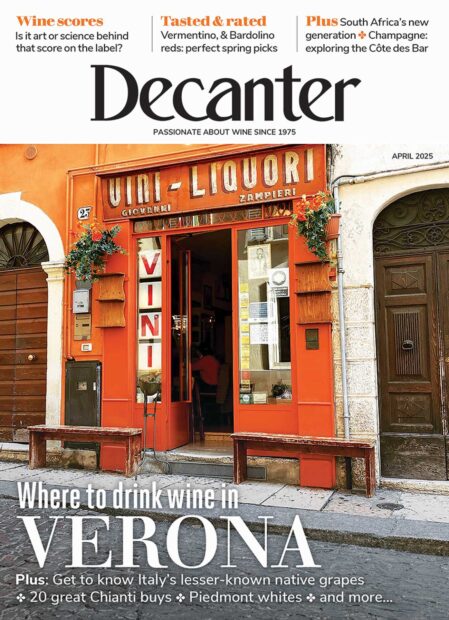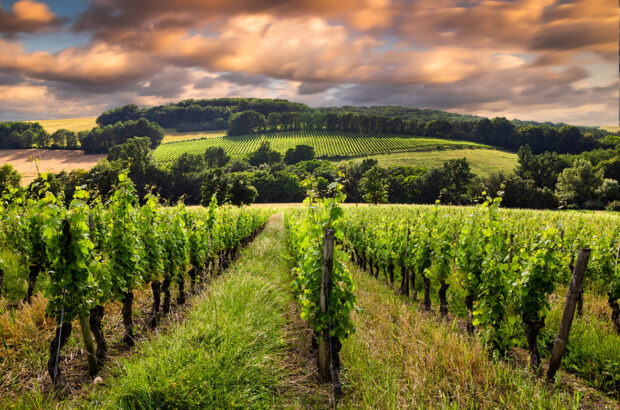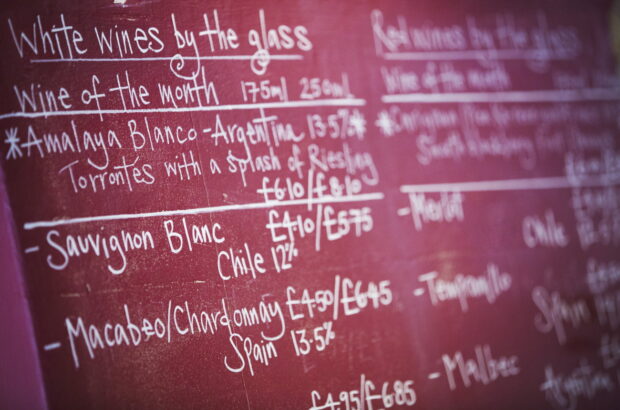Molise is a cultural treasure, still preserved from hordes of tourists despite its beauty, history, approachability and enviable location. It’s a place where time stands still in the constant rhythm of its lively pulse. This little corner of unknown Italy offers a kaleidoscope of colourful idiosyncrasies to the traveller that make this place so very unique. From a constellation of exciting wineries to local food specialties, breathtaking scenery and endless outdoor activities, there is truly something to offer everyone who is fortunate enough to explore this very special place.
Molise is Italy’s second smallest region – and the second-least populated. Situated south of Abruzzo, it is bordered by Puglia to the east, Lazio to the west and Campania to the south, hugging the Adriatic coastline with its pristine, under-crowded sandy beaches. The terrain rises upwards as it reaches inland towards the Apennines. The climate here varies greatly: the thin strip of land on the coast experiences a warm Mediterranean effect, while inland the climate is much more continental with its high elevations of over 2,020m.
Molise is divided administratively by two provinces (named after their major cities): Isernia and Campobasso, the latter being the region’s capital. It is Italy’s newest region, formed in 1963 when it split from the former Abruzzi e Molise region.
Travel to Molise
Reaching Molise is most easily accomplished by car, which also gives the freedom to move around the varied landscape with ease, reach places with limited accessibility, and fully experience the diversity Molise has to offer.
Although Molise does not have an airport, all the surrounding regions do. Distances by road to Termoli, a seaside gem and a must-see for visitors, are as follows:
- From Pescara airport in Abruzzo: 105km
- From Rome airport in Lazio: 332 km
- From Napoli airport in Campania: 200km
- From Bari airport in Puglia: 204km
The coast: Beginning in Termoli
Starting your travels in the seaside town of Termoli, you will be welcomed by sandy beaches, clear water, fresh seafood and picture-perfect houses dressed aptly in florals and aesthetic charm.
Everything to be experienced in Termoli can be done by foot: first make your way along the beach and follow the Passeggiata dei Trabucchi to see Termoli’s famous trabucchi, or fishing platforms jutting out from the land. The wall of the old town leads round the peninsula to the porto di Termoli. From here, you can catch a ferry to the nearby cluster of five Tremiti islands: San Nicola, San Domino, Capraia, Cretaccio and Pianosa. On your way back you will find the old fortress of Castello Svevo, the Belvedere Tower and several viewpoints all intertwined with the old village (Antico Borgo) of Termoli. A few minutes’ walk inland takes you to the main area of the town with plenty of shopping opportunities in the streets leading up towards the highway.
Wine country
A few kilometres southeast along the coastline you will find Campomarino, a quaint little town with even less traffic than Termoli and beautiful murals depicting the life of locals on every building you pass. Now we enter the beginning of wine country in Molise. Over 70% of the vineyard area is planted to red grape varieties. Montepulciano is the key player, with Aglianico, Sangiovese, Cabernet Sauvignon and Tintilia also planted. Merlot and Ciliegiolo can also be found here. The main white varieties planted are Trebbiano Abruzzese and Trebbiano Toscano, with some interesting examples of Falanghina, Greco, Moscato Bianco, Bombino Bianco and Malvasia Bianca being made. Production is small with 5,000 ha of vines producing less than 300,000hL of wine per year. About half of the production is bottled at DOC level, falling into one of four categories: Molise DOC, Biferno DOC, Tintilia Del Molise DOC and Pentro di Isernia DOC.
Wineries to visit:
Via Vina Ramitello will lead you to the respected winery estate of Di Majo Norante (dimajonorante.com). Di Majo Norante produces its wines from over 85 hectares of vines. Of particular interest are its delicious Tintilia, Metodo Classico Falanghina, and a special passito produced from Moscato Bianco. Upon reservation, you can enjoy tastings, lunch and a tour of the vineyards and cellar at this historic winery. The Di Majo family has deep roots here and has been making wine since 1800 on the estate of the Marquis Norante of Santa Cristina. During World War, Allied troops held German prisoners of war in the Norante’s family palace, their artwork still visible today.
Another winery of note in the area is the family owned winery of Tenuta Marta Rosa (tenutemartarosa.com), just 10 minutes away near the small village of Nuova Cliternia. This small town is worth passing through if you are envisioning an autumn trip to Molise as they have a festival in November with a tasting of all the local wines, with local food and family activities.
Cantine Catabbo (catabbo.it) is worth visiting en route to Cantine Salvatore is the last winery in this area before we venture away from the coast and inland towards the mountains.
Azienda Agricola Claudio Cipressi Vignaiolo (claudiocipressi.it) is worth the slight detour. Located in San Felice del Molise, this small organic winery of 12 hectares is Tintilia focused with a dedication to preserving the rich heritage of this grape through research.
Into the hills
An hour away from Termoli by road, the regional capital of Campobasso is an ancient city with twisting, turning stone staircases which make it all the more charming. High above the town you can park and take the short walk to visit Castello Monforte and Santuario di Santa Maria del Monte atop a wooded hill with incredible views.
Drive north out of Campobasso towards the small hilltop villages that shine like jewels in the crown of this rich and diverse region: Civitacampomarano, Bagnoli del Trigno, and Agnone.
To Civitacampomarano from Campobasso by car is about 40 minutes. This small town is absolutely worth the trouble and is one of my favourite places in all of Italy. It’s home to fewer than 400 people yet displays so much life and character. Italian street artist Alice Pasquini has displayed her impressive, colourful works all throughout the village, fascinating visitors and giving new life to this historic centre. Every summer during CVTà Street Fest, she returns to create some new magic in the village. The 13th century Angevine Castle, the 11th century Church of Santa Maria Maggiore and the Gothic church of Santa Maria delle Grazie are worth visiting for travellers keen on history and architecture.
From Campobasso, a 40-minute drive northwest takes you to Bagnoli del Trigno. With hardly more residents than Civitacampomarano at 700 people, the town is quiet yet full of unexpected beauty. Aptly nicknamed the ‘Pearl of Molise’, the colourful town winds around a steep boulder of limestone on which the ancient Lombard Castello Sanfelice is situated. The church of San Silvestro is also worth a visit.
The final gem in our journey is Agnone. The hilltop town is known as the ‘City of Art’ but is best known for its bells – the foundry built in 1040 by the Marinelli family has been making church bells for nearly 1,000. It is Italy’s oldest family business and amongst the oldest in the world. The entire process is done by hand using traditional medieval methods, and clients include the Vatican and the bell tower of the leaning tower of Pisa. In December, visitors can experience ‘Ndocciata’, a special event falling on both 8 and 24 December when fire torches are carried through the town by locals in traditional dress accompanied, of course, by the sound of church bells. The largest Christmas event related to fire in the world, the event is steeped in ancient pagan tradition linked to the winter solstice – the firelight celebrates the sun, while the crackling of the flames is said to ward off evil spirits.
Where to eat in Molise
Local food specialties not to be missed include: maccheroni alla chitarra (egg pasta), caciocavallo di Agnone (semi-hard cow’s milk cheese), cavatelli pasta, cipolla di Isernia (a large, sweet onion perfect for frittatas), formaggio di Pietracatella (a soft, mountain blend of cow, goat and sheep’s milk with a yellow rind), stracciata (a soft cow’s milk cheese similar to mozzarella), local truffles and Ventricina di Montenero di Bisaccia (a renowned sausage from Campobasso).
For fresh seafood with a seaside view, Ristorante Svevia (svevia.it) in Termoli is a fantastic choice with a great wine list.
In the heart of Termoli’s shopping district, Trattoria L’Opera (trattorialopera.com) offers home-style cooking.
For home cooked cuisine you can’t go wrong with the locals’ favourite, Trattoria da Nonna Rosa di L’Abbate in Campomarino on via Biferno (facebook.com/trattoriadanonnarosa).
The town of Guglionesi is home to Ribo (ribomolise.it), a restaurant famous locally for its owners’ polar opposite political leanings as much as for its delicious seafood cuisine cooked in the Molise tradition.
After sightseeing in Campobasso, enjoy some food typical of the region at Miseria e Nobilta (facebook.com/miseriaenobilta.rist), set in an 18th century palazzo with a humble yet luxurious feel.
Where to stay in Molise
For an overnight stay, Termoli has some fantastic options, particularly Casa Del Pescatore (airbnb.co.uk) for its seaside views just steps away from the beach.
Residenza Sveva in Termoli (airbnb.co.uk) is a top value option for those seeking a hotel experience.
La Terrazza (bbterrazza.it) takes the cake in terms of value for money accommodation, with gorgeous rooftop views. From the hilltop castle in Campobasso to your resting place only takes about 10 minutes on foot.
Domus (domushotelbagnoli.it) near to Bagnoli del Trigno provides a resting place for those who decide to stay in the hills and relax, while enjoying a memorable view of the town from afar.
Santo Stefano dei Cavalli (santostefanodeicavalli.com) is located 3km from Agnone. Enjoy horseback riding on local Appaloosa horses at this small family property.
Things to do in Molise
For outdoor enthusiasts, Molise is the perfect place for hiking, climbing and mountain biking during the summer months and skiing and snowboarding during the winter season. Both Campitello Matese and Capracotta are resorts with tours year-round on foot, spoke and skis.
For those looking to have a Molisian experience without the added stress of driving and planning, Molise Cuisine (molisecuisine.com) takes the guesswork out of your trip. They offer itineraries including traditional cooking classes, wine tours, visits to cultural sites and even guided truffle hunting in the autumn.
For the history buff, visits to the ancient Samnite towns of Sepino, Vastogirardi, Campochiaro and Pietrabbondante are a must. The latter – 25 minutes by road from Agnone – is of particular interest; rich in well preserved temples, archaeological sites, amphitheatres and artifacts, excavations are still ongoing today.







